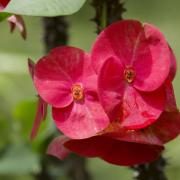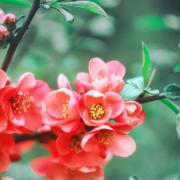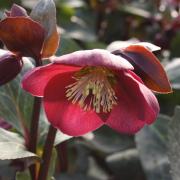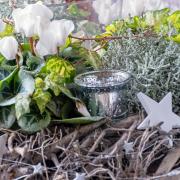Fuchsias are loved by many so let’s take time to look again at a plant that flowers all summer, copes well in a shady position and is easy care. There are hundreds of upright bush and trailing fuchsias available that won’t live in cold weather but there are also plenty of winter hardy ones that, once established, will return year after year with little fuss.
Hardy fuchsias are a pollinator’s restaurant with bees and even the elephant hawk moth visiting for their nectar. I like to plant them with colours that tone rather than clash, and here I offer a few suggestions of plant combinations that I think really complement them.
The first hardy fuchsia is F. ‘Brutus’. It’s a particularly old variety and it has stood the test of time as it’s reliable, vigorous and its deep pink and purple flowers are produced in abundance. I would plant with deep pink cosmos and perhaps a hosta with blue foliage, such as ‘blue angel’. Brutus reaches a height of around 60cm.
A beautiful white flowering variety is ‘hawkshead’. The dainty flowers are enchanting. They are long and narrow, and just slightly tinged with pink with a green tip to each petal. Hawkshead is a hybrid of F. magellanica, and thus can reach 3m high if left to its own devices, but it can be hard pruned each year or trimmed to shape in the spring very easily. Hawkshead makes an attractive bush, with arching stems of narrow green leaves and I love to match it with cottage garden favourites such as 'Canterbury bells', ferns and hostas, and the unusual green flowers of primula Francisca, which flowers constantly until July.
F. ‘Lady Boothby’ is unusual – its climbing stems can be trained up an obelisk or trellis, and the display of deep reddish-pink and purple flowers throughout summer can be quite a head turner - it needs no companions. Iwas introduced more than 100 years ago and has the RHS Award of Garden Merit. Perfectly hardy here in Somerset it can reach 3 metres high in one season.
The last hardy fuchsia on my list is my favourite - F. microphylla ssp. aprica, which as its Latin name suggests, has tiny leaves of dark green, and in summer it is smothered in dainty tubular cerise pink flowers quite unlike its blousy relatives. Compact, it is best underplanted with low perennials such as heuchera.
Fuchsias thrive in dappled shade, in well drained soil, and should be pruned in spring as growth starts. Prune to maintain a good shape. Overgrown plants can be pruned hard.
READ MORE: How to care for fuchsias



























